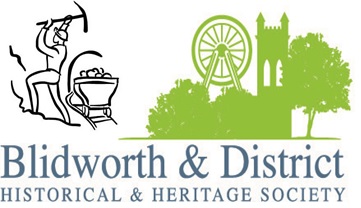RON BRELSFORD, memoirs from Tazmania:
A Memory Reflection
By Ron Brelsford
Resident of Blidworth before emigrating to Australia
Sent to the Society by email on 5th April 2021
“Please find an account written by my uncle, Ron Brelsford, particularly referring to the difficult circumstances of his early life in Blidworth in the early 20th century. As is mentioned in the account, he is now believed to be the oldest person in Tasmania and the 7th oldest man in Australia, since emigrating there in 1970. His wife was Gladys Toon from Rainworth, where they lived until they emigrated.
Ron has confirmed that he is happy for me to send this account on to you if this may be of interest to any of your members. I hope you find it interesting.”
Ron wrote:
“I became a Tasmanian at the age of 105. I was told you are only regarded as a genuine Tasmanian after you’ve lived here for twenty years. I’m not sure I’ll achieve that!”
“I was born in July of 1913 in Nottinghamshire right near where the legendary Robin Hood lived. When I was 3 years old my mother died whilst giving birth to my younger sister. My father was then left to raise my older sister and I on his own which wasn’t easy as he was not a well man due to being gassed during the first world war. Two years later he died. We had a lodger at the time who was a local beekeeper. He was a good man and took us kids on, as we had nobody else. Then a year later, he died. And I’ll tell you this, and it’s a true story believe you me. The day the elderly beekeeper died, that night he appeared at the end of my bed giving me an awful fright and I could only see his face and he said “Be a good boy”. That’s my only ghost story but it’s a good one (laughs).
Meanwhile, I was visiting my grandmother who couldn’t take me in as she had her house full. I would go there for meals but I just couldn’t sleep there. So, I slept at the house of anyone in the village who could have me. Everyone took turns of me sleeping on the couch. There might have been money involved from either my grandmother or the council, I’m not entirely sure. That happened for a long time until such time as my grandmother added an extra room to her house and I was able to move in there. I left school at 14 and worked on farms for a few years. Then I got a job as a gardener’s boy on a big estate. This was in the middle of what is left of Sherwood Forest – Robin Hood country!
On the estate were 3 huge lakes, a forest and a farm on each end. It was very big that estate. When I was 16, someone heard me singing while I was potting plants, and suggested that I join the men’s choir.
I joined the Mansfield & District Male Voice choir. I also played the church organ which I had learnt from the age of seven. I have never danced in my life but used to love going and listen to the music.
When I was 18 years old, I bought a driver’s licence as you did back then - no tests or anything - and a man offered me a job working for an Indian millionaire named Sir Julian Khan who owned a chain of furniture stores. It was my job to deliver all the company cars which were Morris Minors to all the employees all over England.
Then the second world war broke out when I was 26 and I got a job in the army, not with the forces but actual employment. My job involved delivering all of their supplies all over the place. Tents, uniforms, even tanks and weapons. That job went on for the entirety of the war.
The next 21 years I worked down a coal mine. It was not a great job but it paid the bills.
One of the members of the Male Voice Choir had three daughters. The oldest one was called Gladys. She was four years younger than me. We married and had three children. Our youngest son Alan lives in France, our daughter Ann lives up in Mossman in Queensland, and David lives here in Legana.
Our daughter Ann emigrated to Australia with her husband, and two years later she convinced our eldest lad David to also move here, which he did as a single man aged 22.
Around 1970, Ann had a serious illness and almost died. Gladys sat me down and said “We are going to Australia to be with our Ann.” So, at the age of 57, we moved to Sydney. I got a job with Avon Cosmetics as a cleaner at their factory and stayed there for 7 years until my retirement.
I tried smoking a pipe once when I worked on the farm, and I was sick for the rest of the day. I haven’t touched tobacco since. I have never drunk alcohol: the smell of it puts me off. Workers from coal mines are notorious for having lung and health issues but I managed to escape all that thankfully. I think my singing helped to keep my lungs healthy and free from disease.
Gladys and I were married for 62 years before she passed away. Things start to fall apart as you get old. I had glaucoma and had to have laser eye surgery which didn’t go too well, so I am blind in one eye now. Other than that, I am a pretty healthy 107-year-old. I received a letter from Vera Lynn when I turned 100 which was a big thrill.
It seems that I am now the oldest person in Tasmania, and the seventh oldest man in Australia.
After living on NSW’s Central Coast for many years, Dave wanted me to be around him as it became very hard once I stopped driving, so here I am.
I live with Dave and his lovely wife Anne now in Legana. I like to listen to music during the day – Dave has a good collection of CDs – and every evening we play scrabble. I have nine grandchildren and twelve great-grandchildren at the last count. The youngest one was born only three months ago but I haven’t seen him yet. Hopefully they can come over from Melbourne once the restrictions have been lifted. Family is everything in this life”.
April 2021
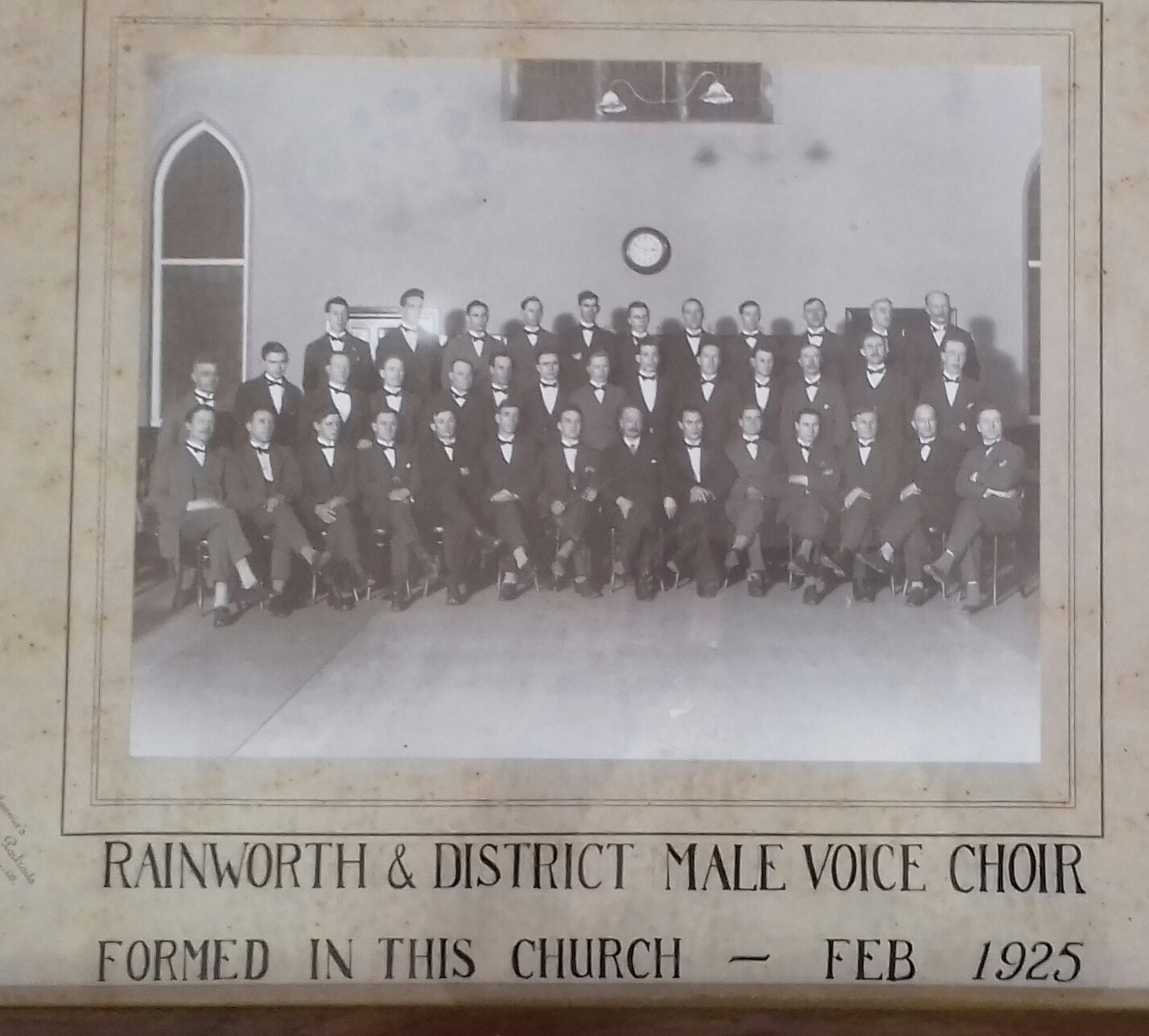
Ron Brelsford was a member of the Rainworth & District Male Voice Choir (later to become Mansfield MVC) and he is pictured here along with his to be father in law.
Photo donated by Alan Mosley of Rainworth from the Rainworth Methodist Chapel.
Many thanks to Karen Ball for the following family photos showing the Nettleship's garage that used to be on Mansfield Road just below the Scala Cinema. Karen says: I have posted one of these pics on fb a couple of years ago but thought you might like them to help with your 2021 project. The are of me and my elder Sister around 1963-64.
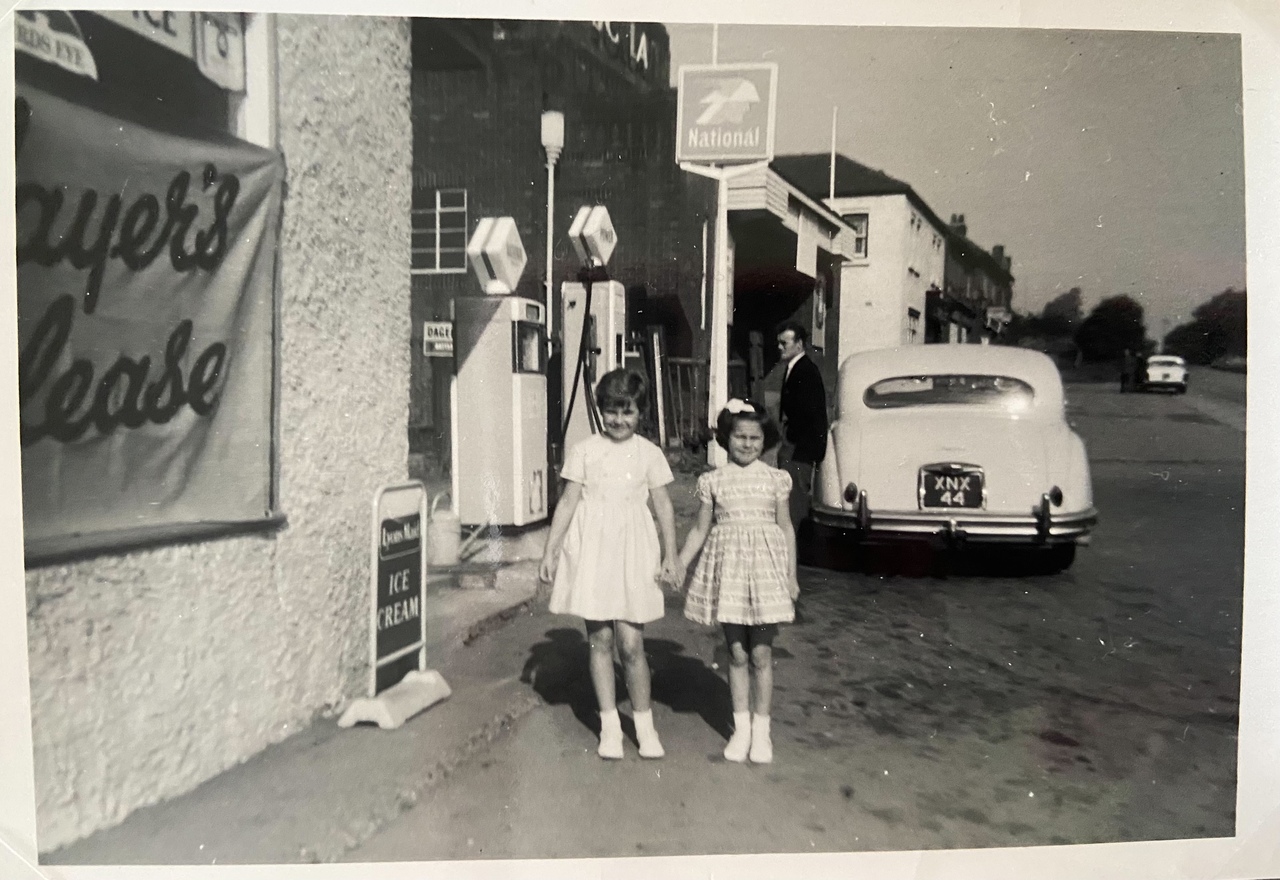
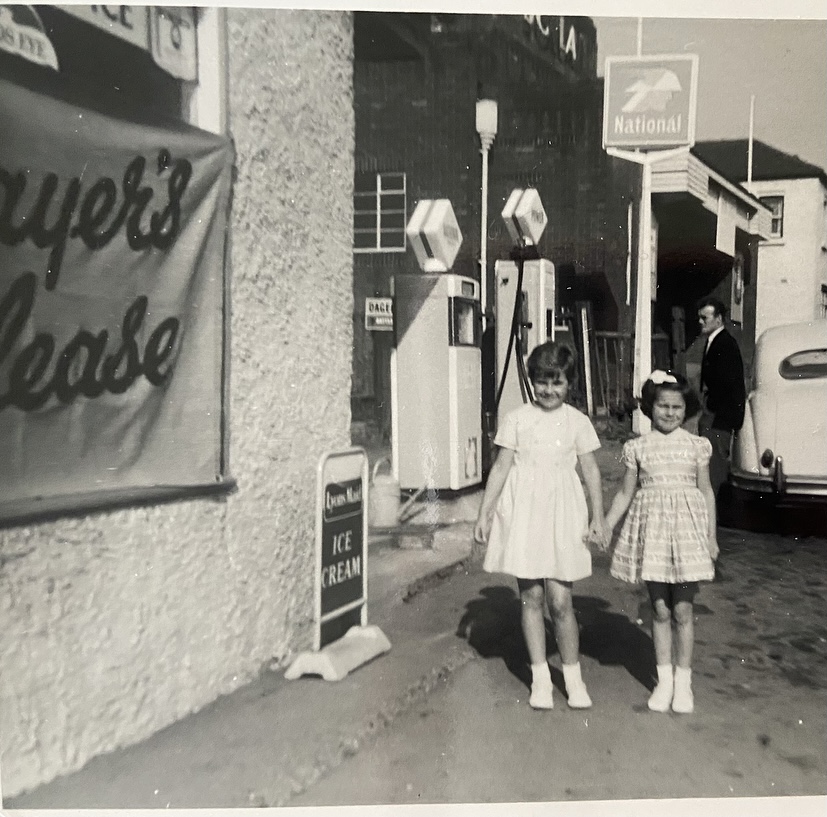
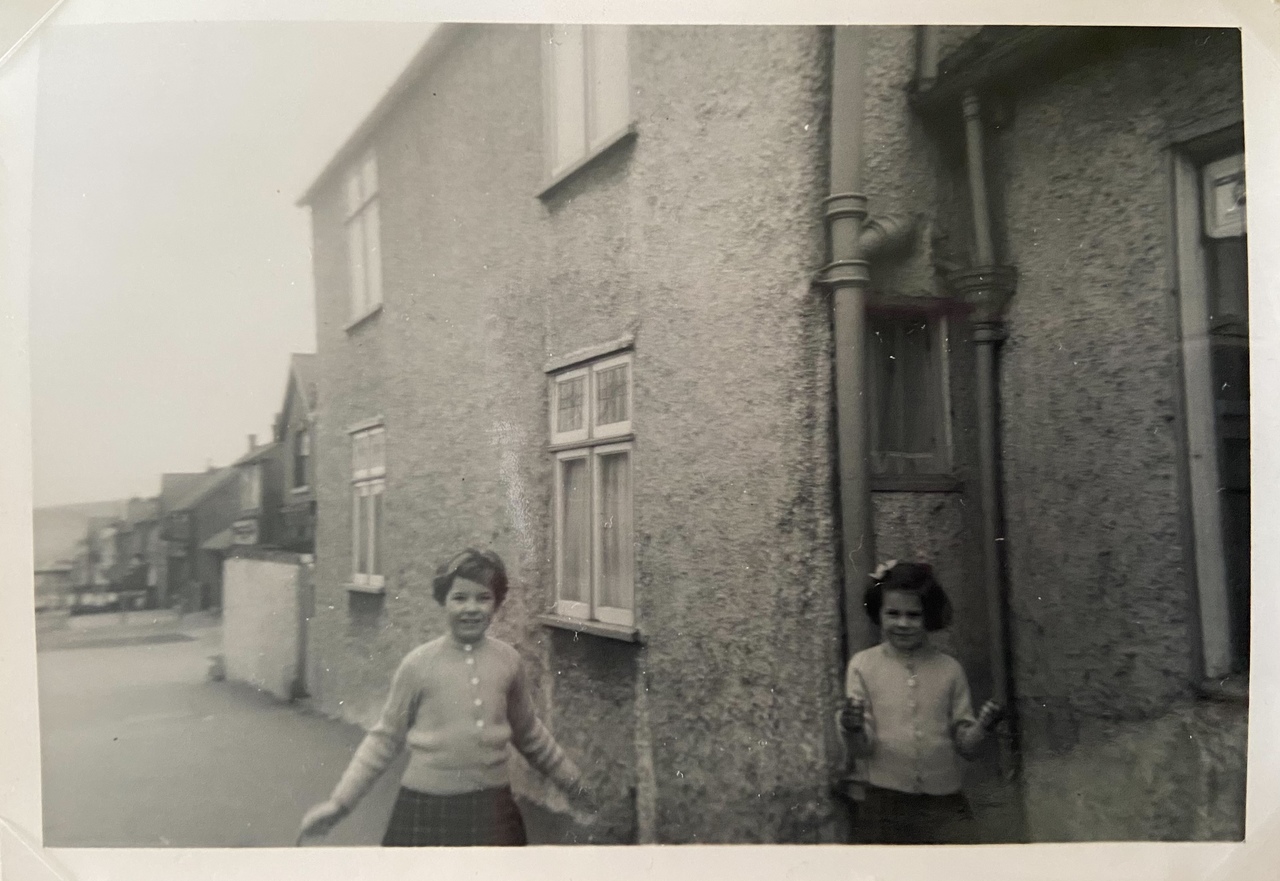

Karen's grandmother, Ivy Gascoine kept a diary of her time in Blidworth and here is an extract about the weather in 1963:
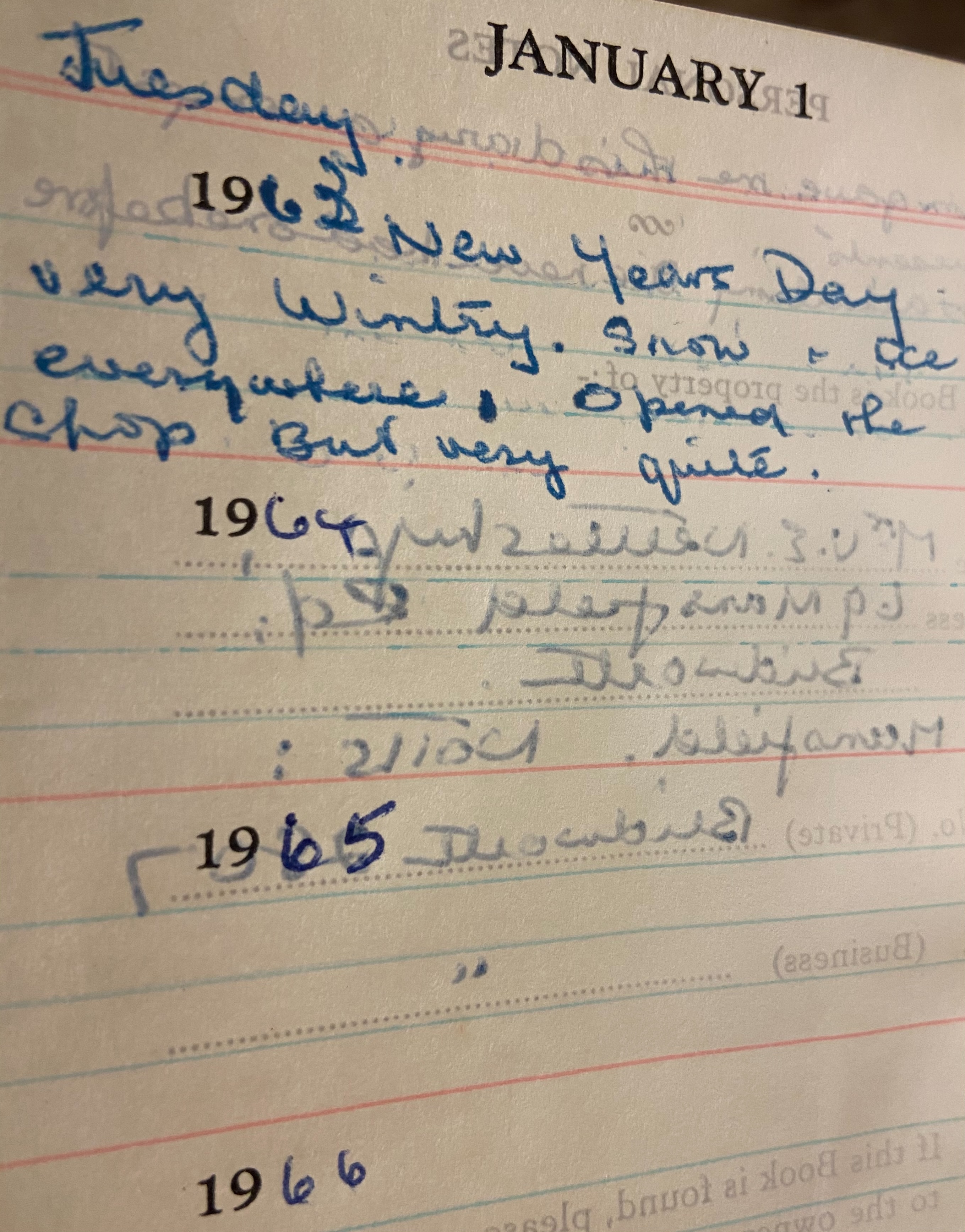
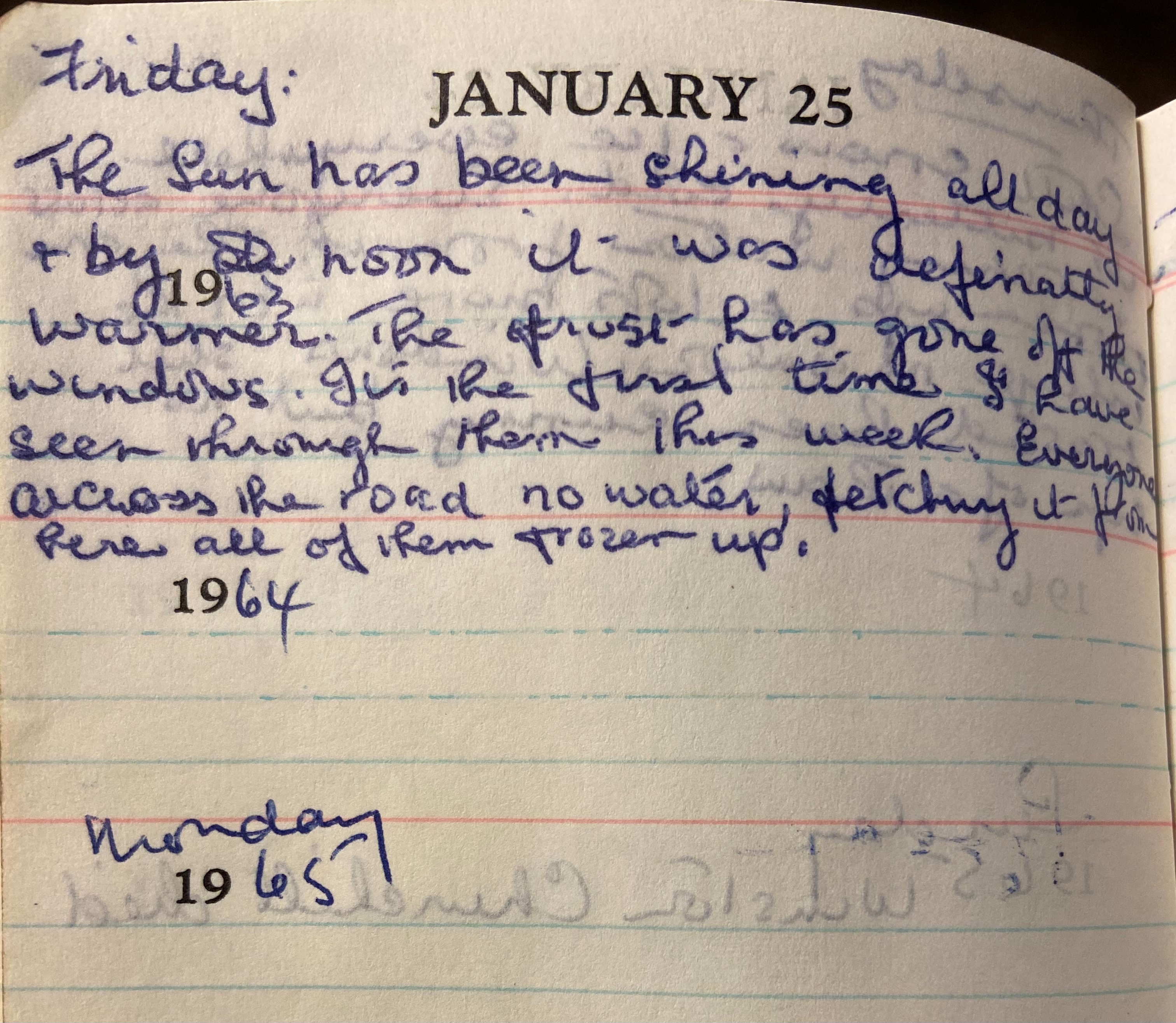
Ivy had a young visitor from USA and the visit was recorded in the paper:
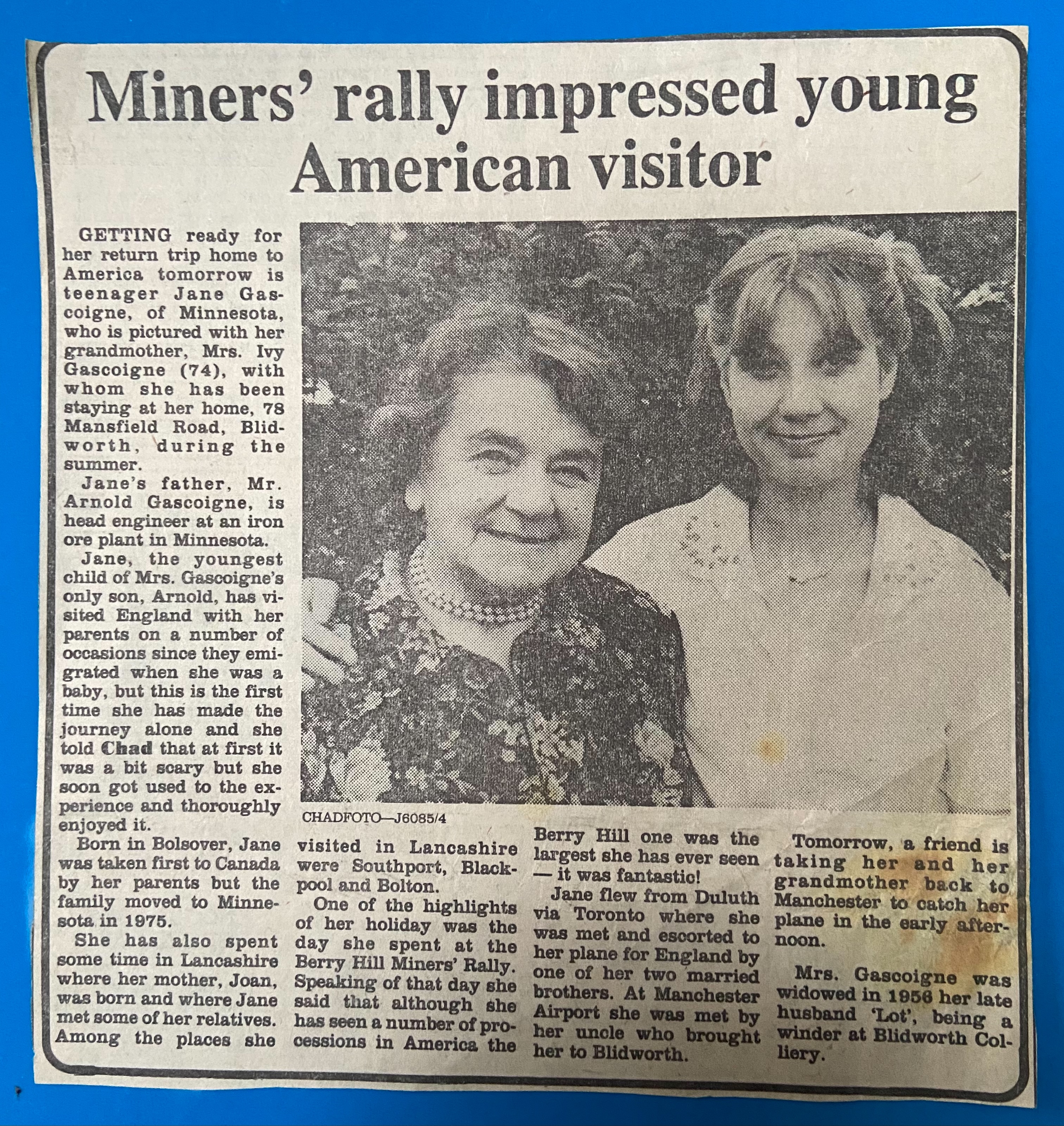
We will be featuring more photos and diary extracts in our news sheet and on our website so watch this space.
Nettleship's garage was previously owned by Polly Booth and she sold sweets and petrol.
The area currently with Blidworth Carpets to the drive leading down to Combo Court (where the old cinema used to stand and down the back Smithy's Club) and Milward's Shoe Repairers was in what is now Blidworth DIY.
We received a donation of photos from Val Roberts (nee Dunn) and they show the development of both the Dunn garage and business that was where the current Dale Lane Garage stands, plus their business at the end of New Lane junction with Mansfield Road East, Dunn's Electrical Repair & Cycles (Fishnet currently).
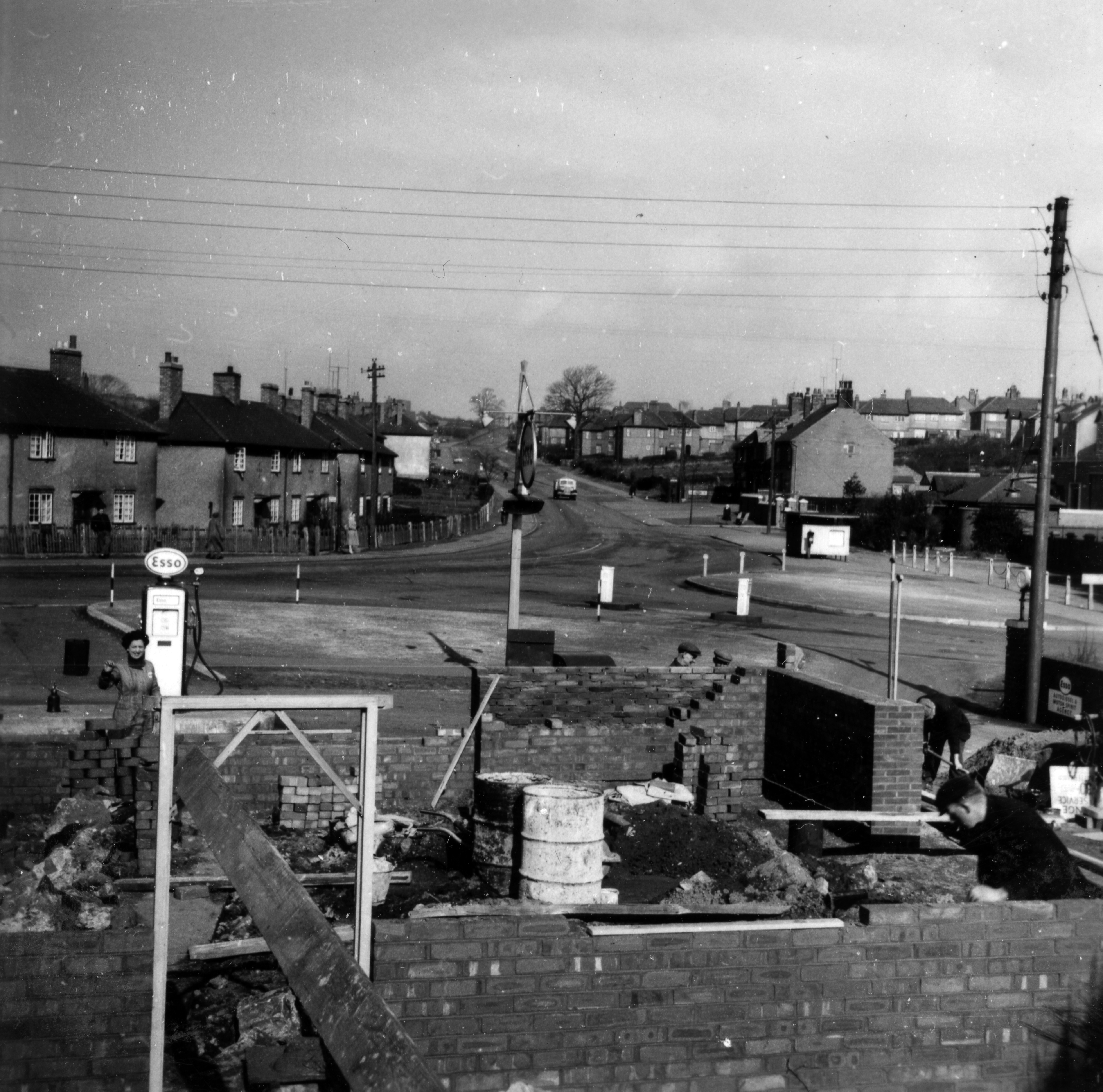
We will be featuring these in both our news sheet and articles in Community Newsletters, so watch this space for more.
Dunn's garage start of build, view up Mansfield Road, with Main Street to the left of this photo and Dale Lane going to the right.
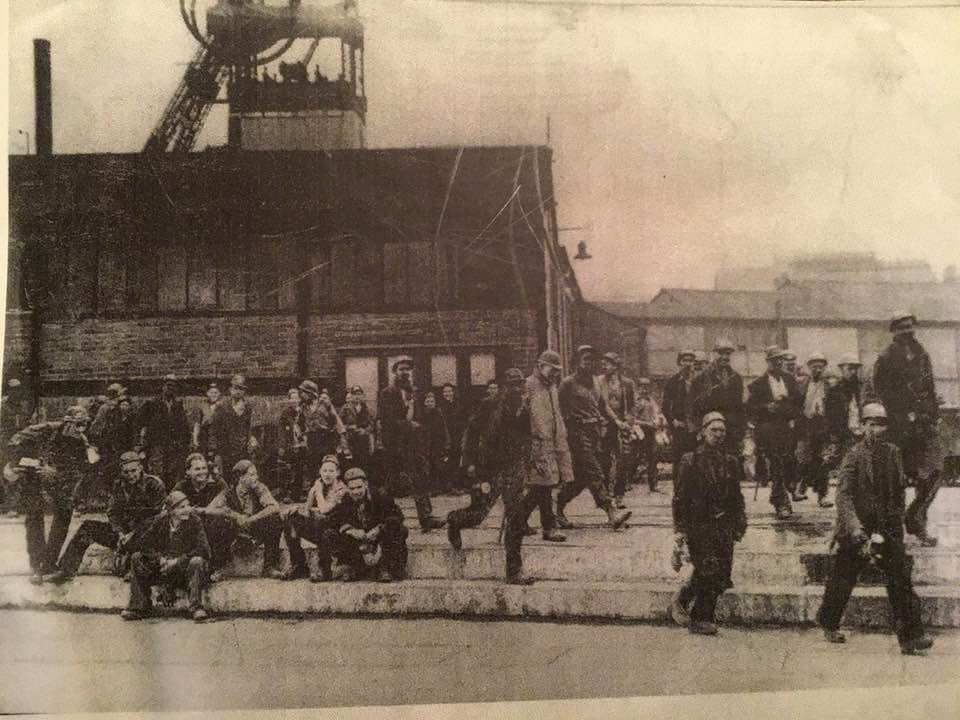
Wilfred Lingard posted this photo on Facebook, and gave his permission for us to use it in our archives.
Blidworth shift change in early 1940s.
It has generated a lot of memories for many of the Blidworth miner's families, myself included.
My maternal family name Saville had several miners working at Blidworth Pit; my dad Des Williams worked there for 33years. The family married and names such as Buchanan, Peniston, Candlin joined that of Saville.
Friends were made and became life long "family" Bob Hardwick married Barbara Ward and they lived for a short while in Blidworth with Bob's family that included his brother Arthur - until they got their house in Rainworth the same day as my parents 1st January 1954.
The following photo of Blidworth engine number 1, was given to us by Mrs Alice Crowder, previously a resident of Blidworth. Her grandfather John Edward Thorpe, known as "Jack" is the middle gentleman. Anyone recognise the other two gentlemen?
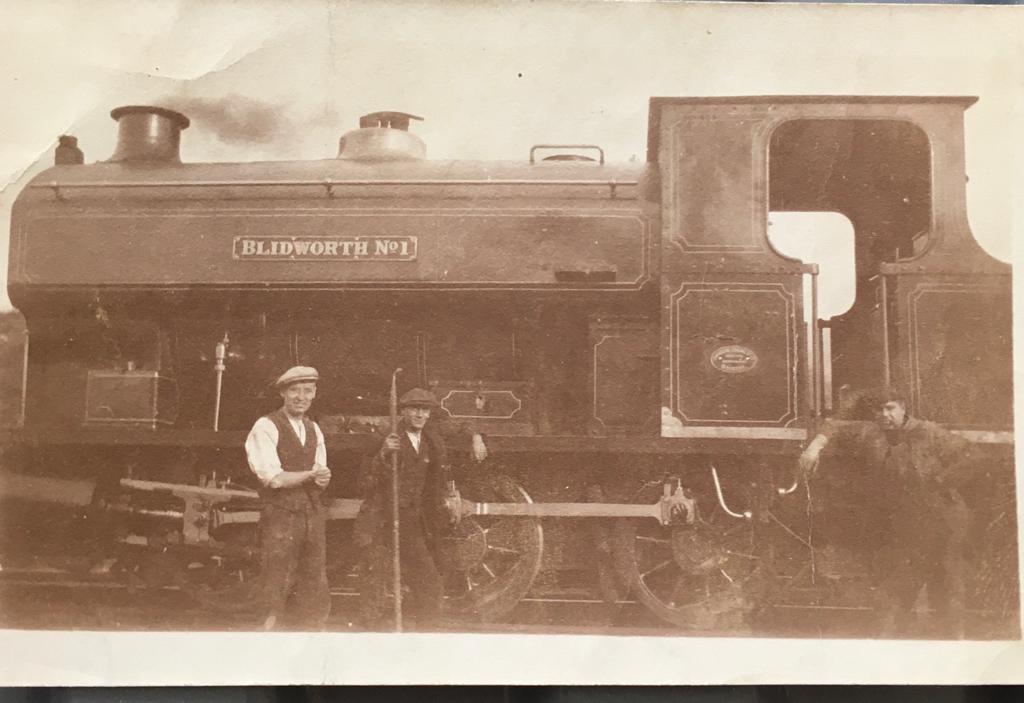
Alice, known to friends as Al, was married to Harry Crowder
who also worked at Blidworth Pit as a blacksmith. They lived most of their married life on Aberconway Street, Blidworth
They lived in sight of the Blidworth headstocks.
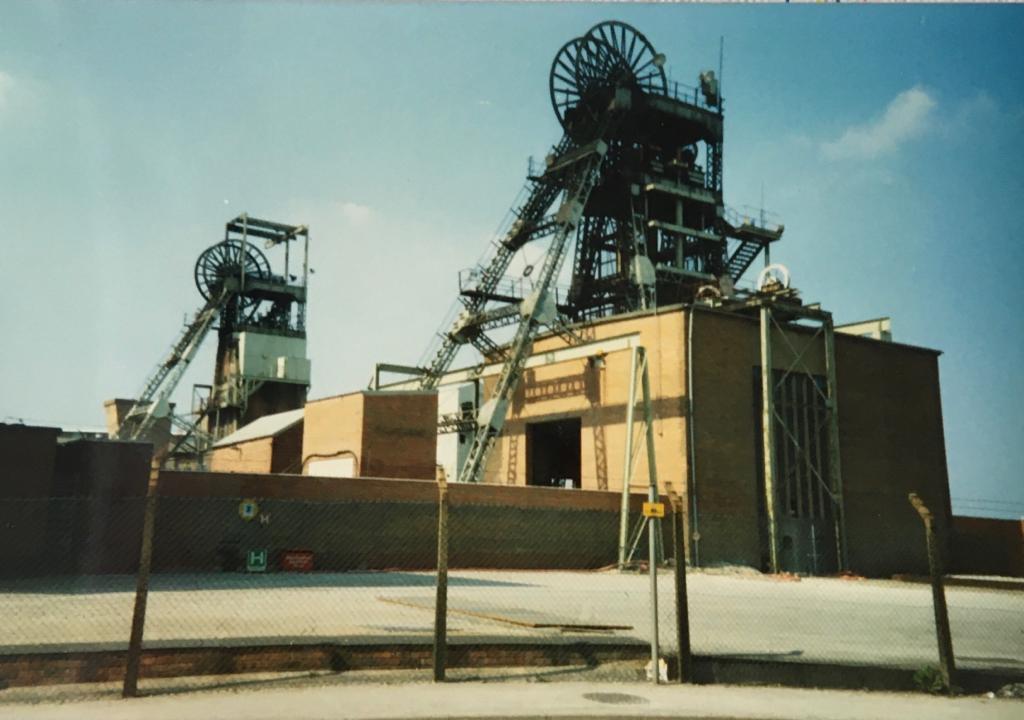
They saw the preparation for the demolishing the pit chimney!
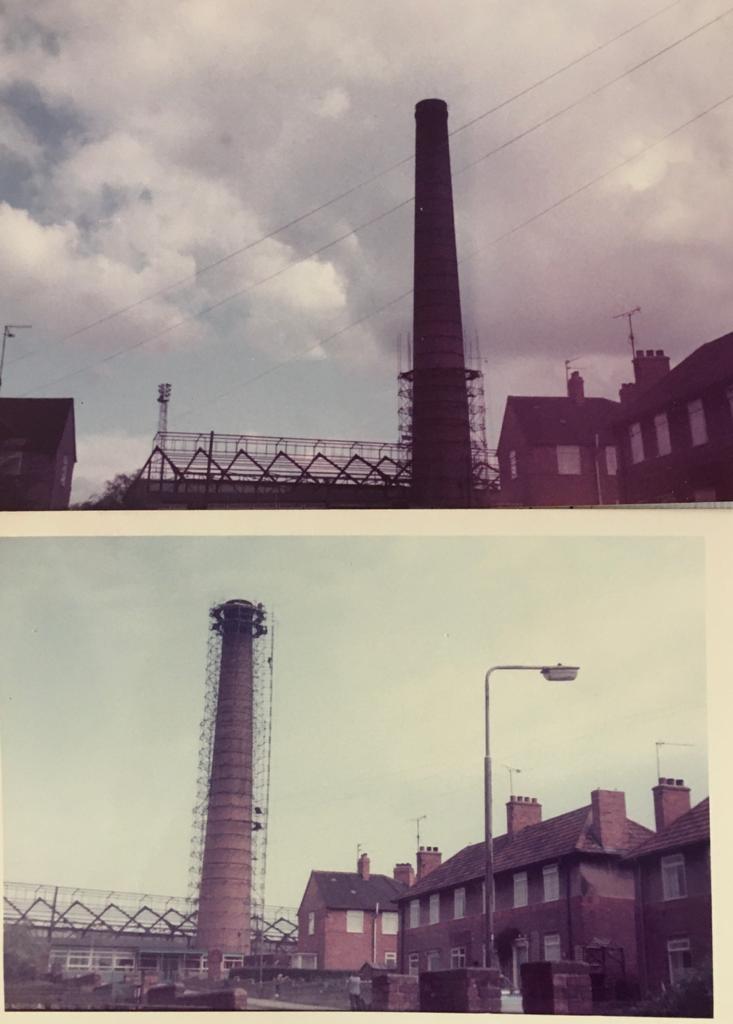
Their youngest daughter and I went to school together and social events such as a Tramps Disco; what a sight!
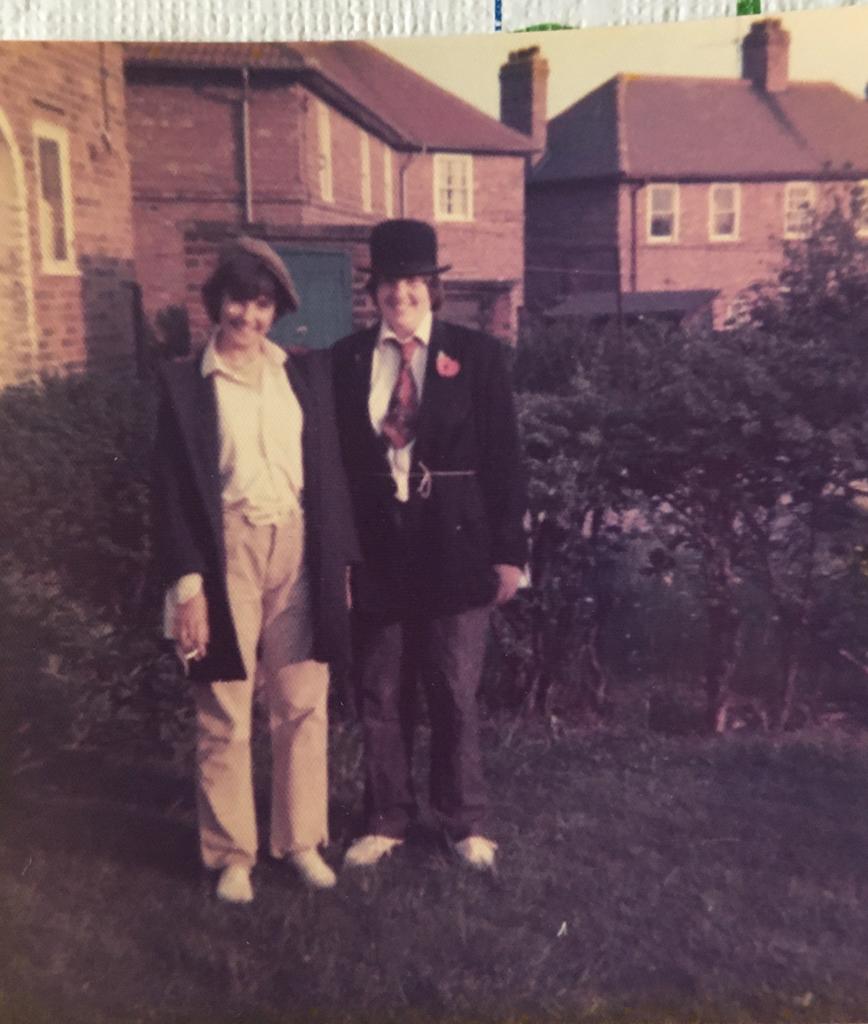
The photo was taken on the back garden of Aberconway, not exactly historical, but the bowler hat I am wearing was my grandad Savilles' and the poppy on my lapel tells you the time of year it was!
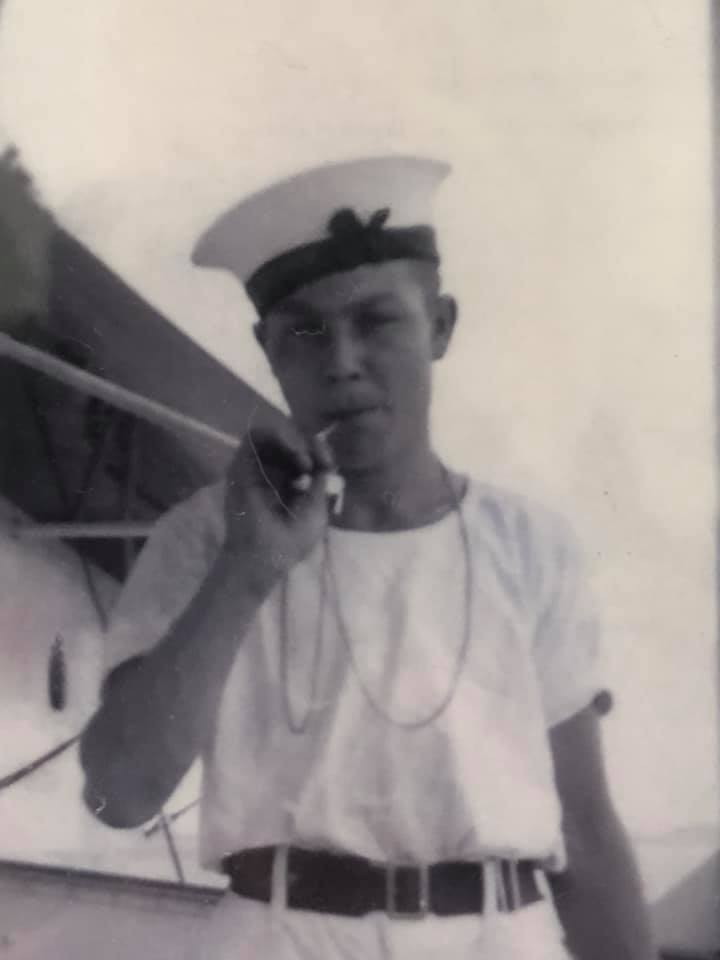
The British suffered many casualties during the ‘Battle of Hong Kong’. George was ‘missing believed dead’, and my grandparents Len and Amy Savage who lived at 17 Lyndhurst Avenue Blidworth we’re notified.
When George was finally able to return after escaping Hong Kong to mainland China my grandparents had not been informed that he had survived, so when he turned up on their doorstep in 1942 you can imagine their reaction. Amy fainted, and Len who was working down the ‘pit’ was told that George was home safe and
well, left work and returned home.
Len then took time off work to be with George. His employer summarily dismissed him! He didn’t return to the colliery until the mines were nationalised.
Following the war George eventually returned to Blidworth, working down the pit and finally working as the caretaker at Joseph Whittaker school where he died in January 1982 at the early age of 63.
An Introduction to Harry Clarke
Harry Clarke, son of Samuel Clarke Boot and Shoe maker in Blidworth, Notts, assisted his father in the recording of life events in and around the Village of Blidworth in a journal, commonly referred to as “Sam Clarke’s Diary”. In addition, Harry also kept a journal and the Blidworth & District Historical & Heritage Society has obtained these journals (two notebooks containing handwritten notes very often associated with a place or a date. Also included are some news clippings, photos and a few handwritten pamphlets. In order to preserve the delicate original, each page is being transcribed and will be published in the same manner his father’s journal was.
Due to the current situation (Covid-19) the Society has had to rely on other mediums to keep our membership informed and entertained. So as the journals were transcribed, we began putting the segments onto our website, Facebook pages plus a printed News Sheet we have been producing for those members unable to access technical mediums. Because of this the rate of transcription has been a little slow and although it had been our hope to put the finished project onto our website by now – we hit a snag! So, instead we have concentrated on the pages relating to 1939 – 1945 because of this year’s 75th Anniversary celebrations of VE and VJ day. Then the intention is to publish the whole journal on our webpage, plus have a copy that can be loaned out to members, thus retaining the originals within our archives.
The original manuscripts have some grammatical and some spelling issues, and so where necessary, and to avoid confusion, with considerable care and research, a few minor amendments have been carried out. This in no way detracts from the author’s original objective or intention, but does help the reader to more clearly understand the original wording. In other areas, the text was left as the writer wrote it.
The segment 3rd September 1939 – end of 1945 is now complete, anyone wishing an electronic version can request it via our email blidworthhistory@virginmedia.com and one will be sent out.
Thanks are given to Geoffrey Eyre who kindly notified us of two errors in the copy sent to him, these have now been amended in the master copy.
This booklet, donated by Adam Gunn, will soon be copied and then held in the Society's archive.
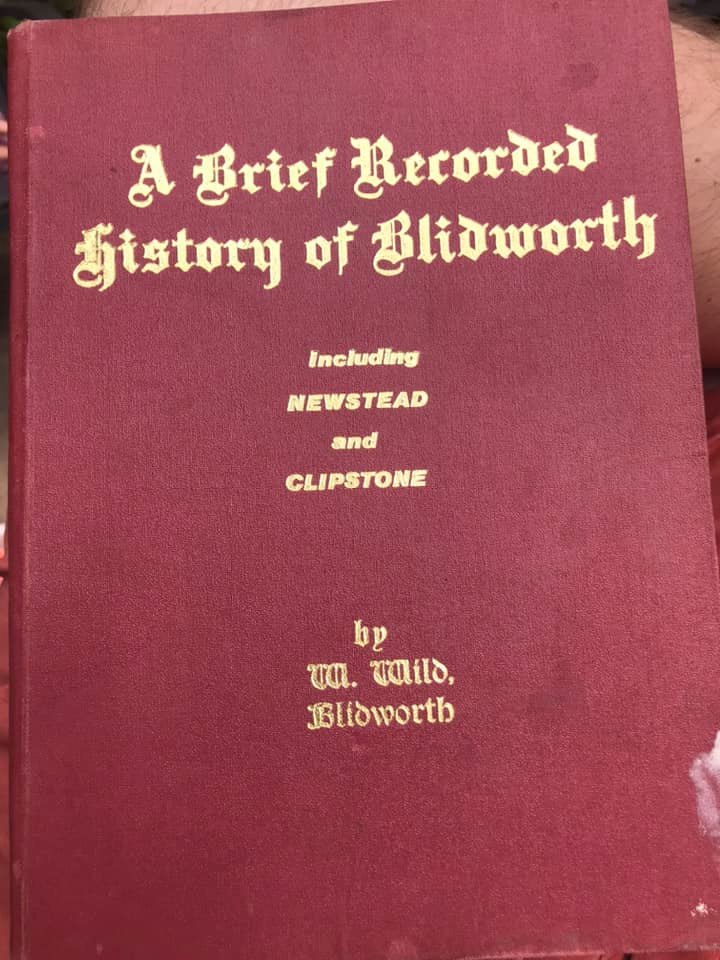
Photo by courtesy of Michael Gallaher, aged 5, at the VE Day Celebrations of 1945.
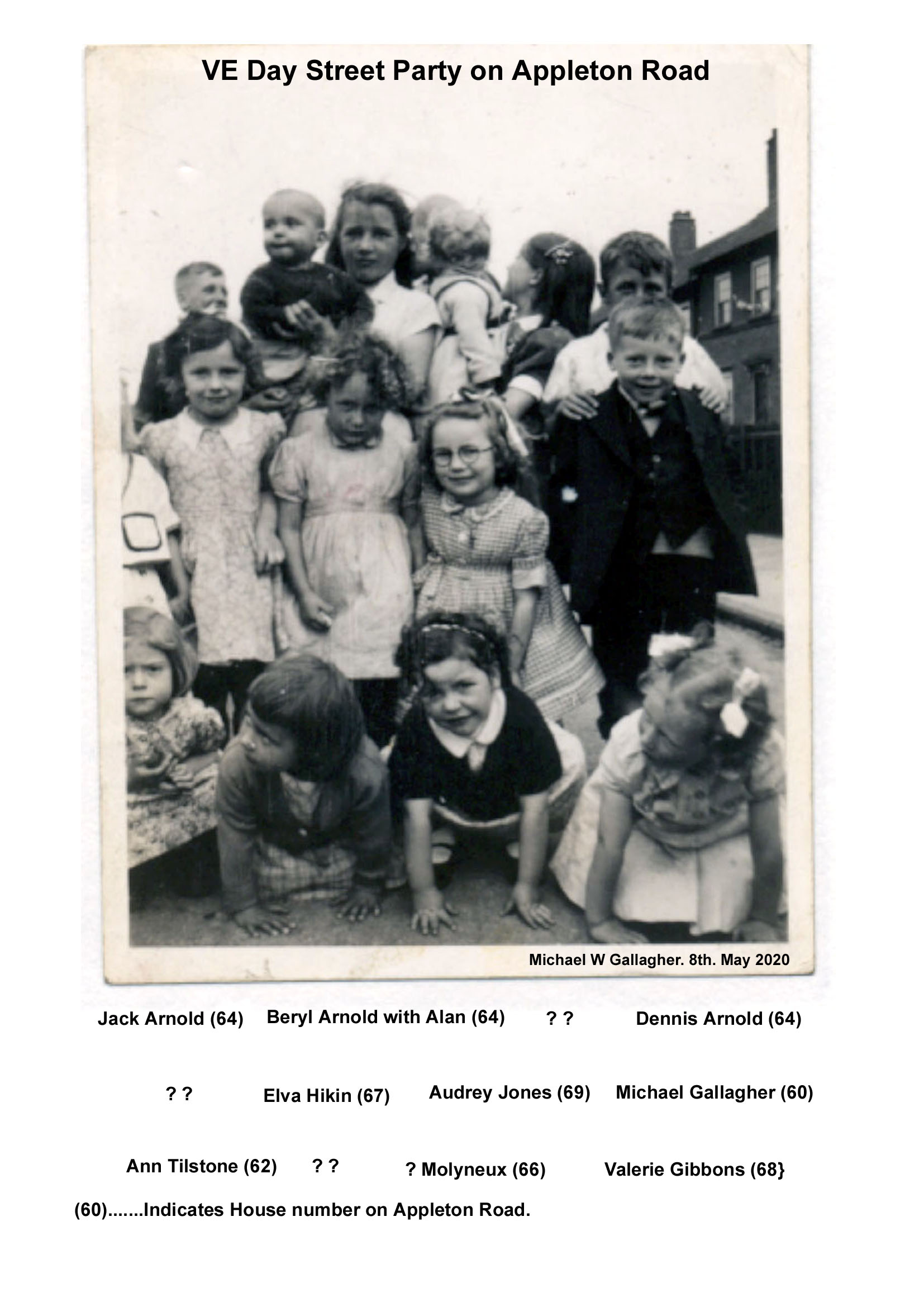
Simon Bishop recently posted some photos and news cuttings about his grandfather Sam Nixon, then kindly shared them with us so we can display them on our website. In his own words Simon said, "My Uncle wrote a short book about my Grandad Edward Bishop’s life who moved to Blidworth in 1925 to work on the sinking of the pit, he later became manager from 1942 until 1951, included is a chapter about living and working in Blidworth which may be of interest."
So hopefully we will have more things to post or to see when we can get back to meeting again! Until then, enjoy
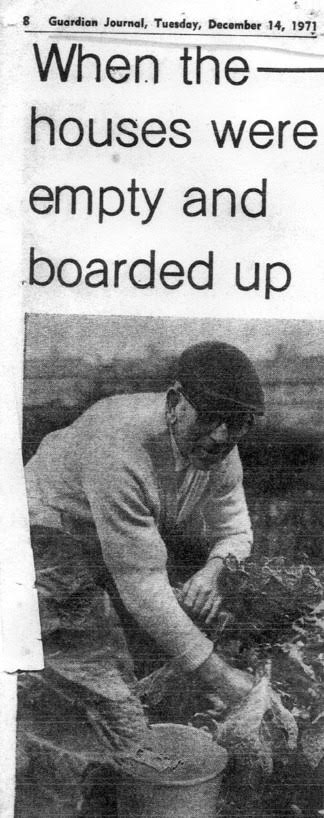
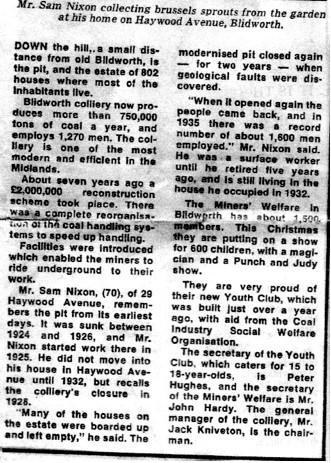
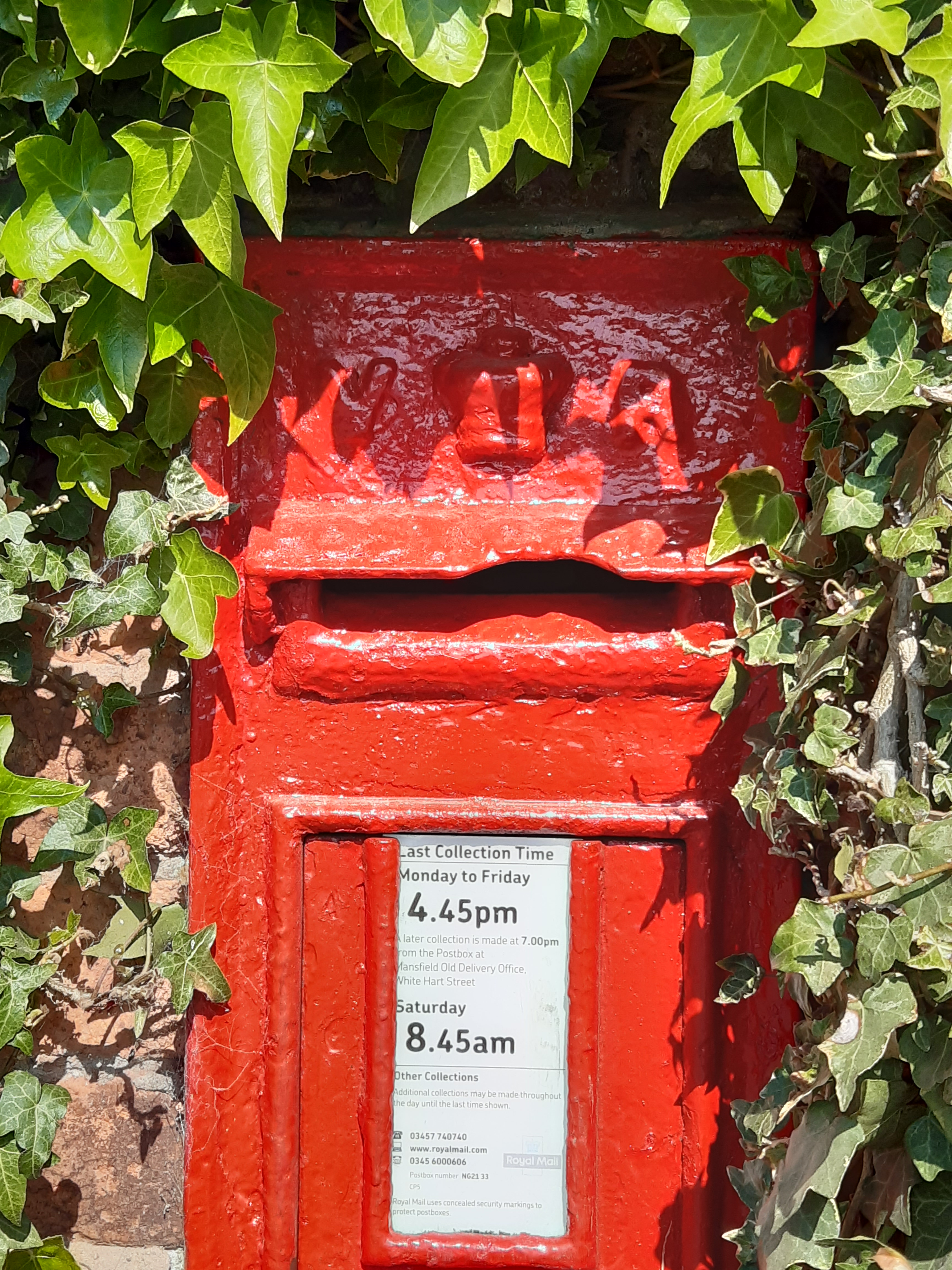
Joyce Henderson took this photo
Another Blidworth resident mentioned he knew of a GR post box in the wall near to Blidworth Church, The Church of St Mary of the Purification. Anyone got a photo to share? Know of others in the area, earlier or later? and allowed us to use it on our website. Its a Post Box dating back to Queen Victoria's reign note the VR for Victoria Regina - faintly impressed under the layers of red paint. It is to be found in the wall near the Fox & Hounds Public House, Blidworth Bottoms. When Joyce's picture first appeared on the Facebook page it generated a great deal of discussion as to whether or not it was the oldest post box in Blidworth? The answer - you tell us?
Tina Kocij (Nee Talma) posted these photos taken around Blidworth & District in her childhood. Recognise anywhere or anyone?
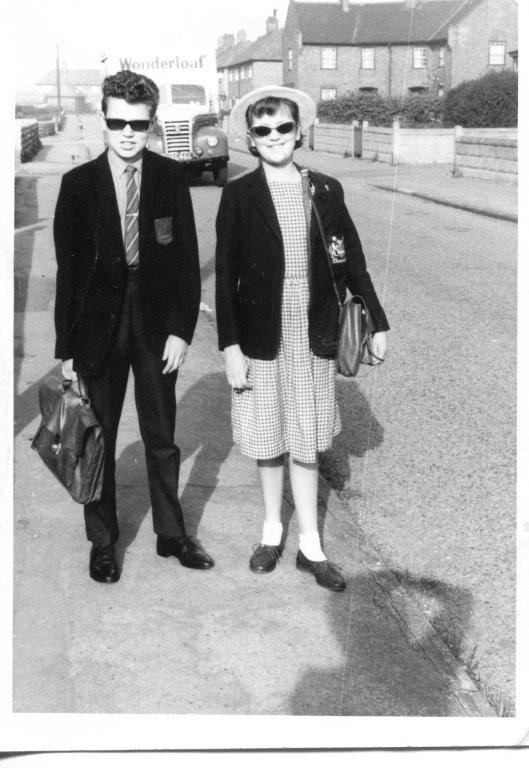
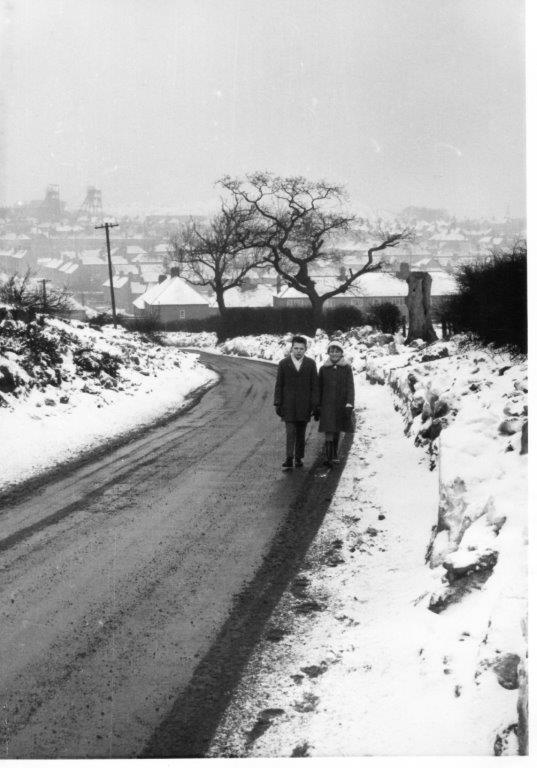
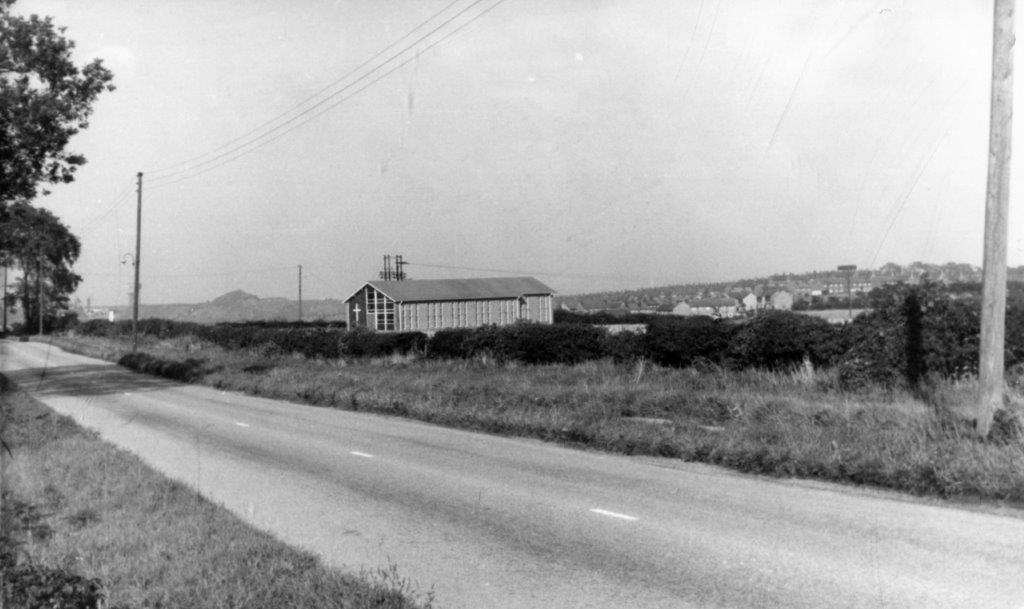
The following image was on Facebook last week in answer to a question from a Blidworth resident asking Does anyone know of a pub in Blidworth called the Red Lion, and if so where is or was it? You answered in your hundreds. The image and aarticle about the objections to the renewal of licences are courtesy of Tony Britton. They have been seen in many guises over the years and our thanks for being able to share them on our site.
Red Lion Public House 1953
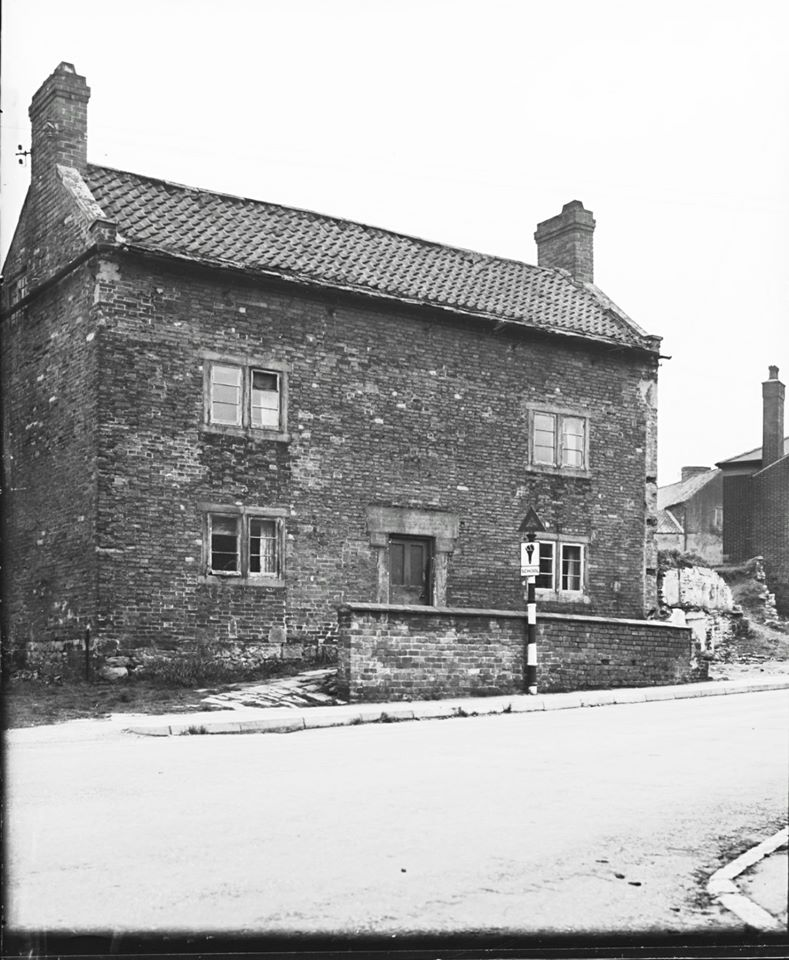
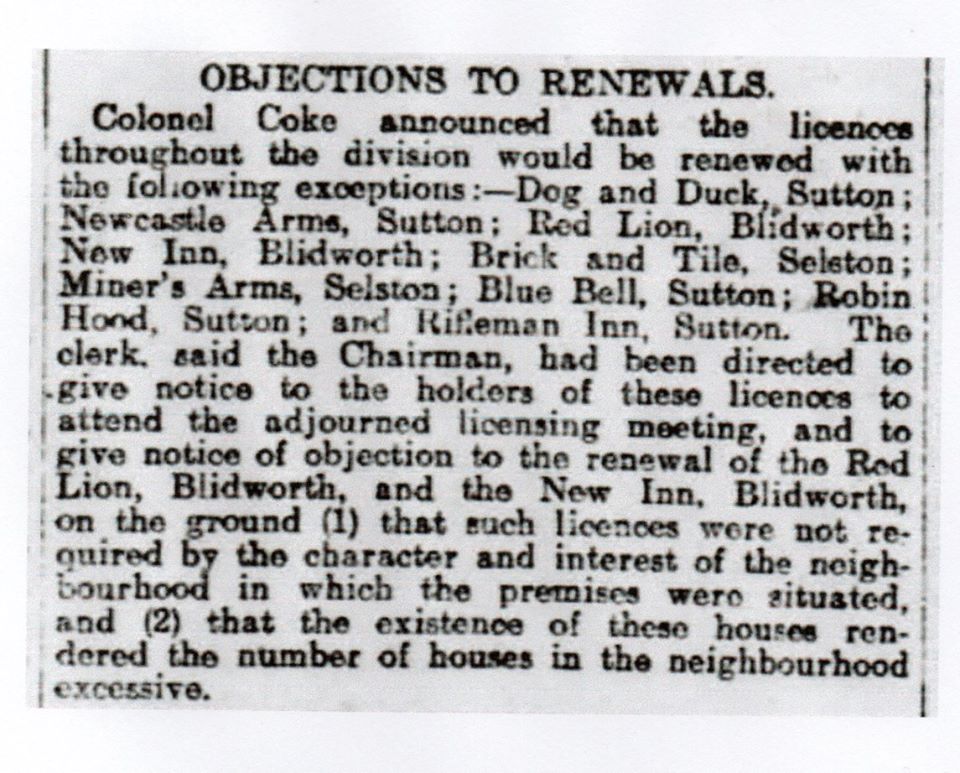
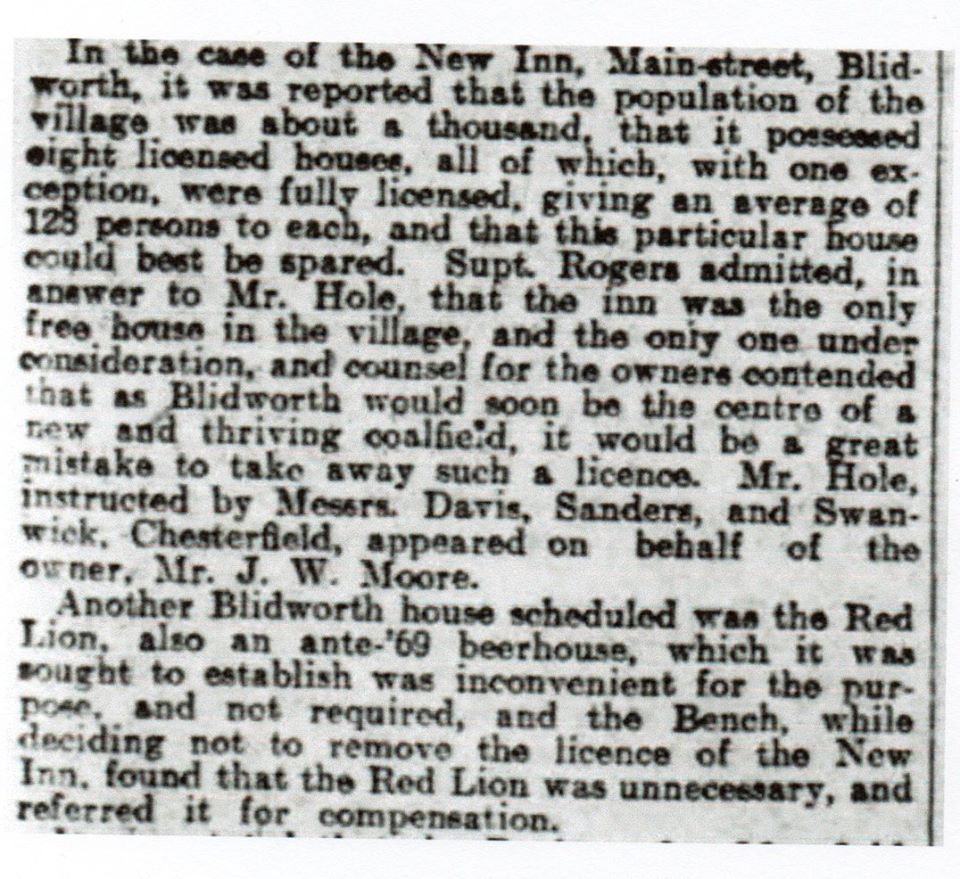
PLANE CRASH
The V-1 flying bomb, buzz bomb or doodlebug capable of carrying a warhead 160 miles. Germany had V-1 sites along the French and Dutch coasts. London was the target and the RAF were deployed to destroy these sites.
One of the sites was the launch site at Croix-Dalle in Normandy France.
On the evening of July 6th 1944, bomber MZ519 LK-U was returning from Normandy having targeted the launch site.
The aircraft was hit by flak and was seen with one engine on fire at low altitude over Nottingham City Centre. It's flight path took the crippled plane over North Nottinghamshire, flying low over collieries such as Bestwood, Calverton and Newstead. The plane eventually crashed 2 miles from Blidworth in a field in Farnsfield. Mrs Gwen Wilson, who moved to live on Lyndhurst Avenue, having moved to Blidworth from Leicestershire around 1934, gave an interview to the BBC WW2 People's War - an archive of WW2 memories. This was recorded for the BBC in August 2010 when Mrs Wilson was 84 years old.
With permission from Mrs Wilson's family, she recalled- "I saw the British plane which crashed in Farnsfield outside the village. I had gone to live in Farnsfield. I saw it come down Dale Lane towards Farnsfield and saw it crash over the first fields. The pilot died"
The remarkable recollection of Mrs Wilson gives great credit to the pilot Reginald Parfitt and his navigator and wireless operator who, despite flying at decreasing altitude, avoided the pits and headstocks.
Perhaps the closest the Halifax came to the colliery, was the 400 or so yards to the chimney and headstocks at Blidworth east of Dale Lane. Sadly, all of the 7 crew on board were killed.
The pilot was a hero. He put the plane down away from Blidworth and Farnsfield.
As a postscript, can I add that the aircraft was on course for RAF Burn 59 miles away.
John Durkin 2019
A View from the top
Having read the recollections of R H Whitworth “Blidworth and Neighbourhood” (Circa 1890), I found his first passage intriguing.He alludes to the panorama that could be seen from the elevated position of Blidworth church. He quotes that “looking Northward on a clear evening, and especially with a glass, the tower and spire of Laughton-en-le Morthen, known locally as “Lightening in the Morning” come into sight.
The Church of All Saints with its spire rising 185 feet would be all of 20 miles from Blidworth.I have often wondered, and was curious if the Reverend has viewed the tower from ground level (498 feet above sea level) or took advantage of the church tower?
By arrangement with the church warden Robin Sharpe and kind permission of the Rev. Hazel Robinson, on November 10th 2012, my son Darren and I were allowed to ascend to the top of the tower. It was a perfect early winter’s morning with clear blue skies. With a camera and a good set of binoculars, we photographed the village and surrounding area and attempted to look Northward towards Rotherham. Sadly, what R H Whitworth once viewed from the churchyard has long since ceased to be visible.
Nevertheless, many landmarks and buildings were easily visible, notably Lincoln Cathedral, Belvoir Castle, Mackworth water tower near Derby and much of the Trent Valley with its power stations. Excellent views of Blidworth Dale and Fishpool could be seen, with curious images of Old Blidworth farms seen from above.
John Durkin 2016
The Scissor Grinder
The changes that are brought about by social and economic reforms do not only disturb large businesses. This was evidently clear as I walked to Blidworth Colliery at lunch time in the year of 1961. There was a man with the tools of his trade walking towards me. His tools included a head high metal bar with small wheels at the bottom of the long bar. This enabled him to push or pull it up the roads. At the lowest end of the bar was a pedal which, when depressed rotated the circular sharpening stone at the top of the neck. This man and his chosen trade had become known locally as the Scissor Man and had plied his trade in the villages for many years. However most of the houses were now using their radios, (and TV was to come) due to this they could not hear the Scissor Grinder shouting so he had to send his wife to knock on the door and ask if they wanted any knives or scissors sharpening. The answer had become a firm NO as new ones could be purchased for the same price at the local shops or the shops in Mansfield. The Scissor Man had become aware of these facts and standing in the centre of the road, he had to retire to the causeway because a car was coming down the road. Another sign that life was changing rapidly. The car was the last straw for him, and seeing me carrying my sandwiches on my way to work, he delivered a tirade at me which according to him proved that all miners were illegitimate. I was then treated to a series of expletives including double and treble expletives as I realized the Scissor Grinder was taking out of me the changing pattern of the new world. I did not offer the man a reply as I realized his small business was desperately under threat.The world was changing rapidly.
As witnessed by John Gilding
Sunrise over the Druid Stone
The Reverend Richard H Whitworth (1865-1908) first suggested that the sunrise on the Summer Solstice could be viewed from the Eastern aperture of the Druid stone. This was without evidence. Frank Earp and two colleagues from the Nottingham Hidden History Team in the mid 70’s tested this theory and concluded that this was not so. They calculated that a Beltane sunrise on May 1st was probable and the sun would appear over the site of the rock. This was further supported by my observations on June 21st 2014 and May 1st 2016. I photographed and recorded the sunrise on both of these occasions. The sunrise on May 1st 2016 was observed as it rose to pass directly through the Eastern aperture. This would confirm the theory that Beltane, the start of the Celtic quarter day May 1st and sunset on Samhain October 31st would be marked by the passing of the sun. There is of course the possibility that the hole is naturally occurring. However, those who have studied the boulder would believe that at some point in history, man created the hole for a purpose. Given that there are several of these conglomerates of similar size and construction, then evidence would suggest that it is indeed man made.John Durkin. June 2016
Friar Tuck, a Hermit of Fountaindale and Copmanhurst.
Robin of Loxley or Robin of Sherwood. It depends on which bit of English folklore you prefer. Yorkshire folk claim he was born in Loxley in 1160, where he roamed the Forest of Loxley Chase.
Loxley Chase was extensive, reaching south east to border Sherwood Forest. Fountaindale Lodge, once used as a hunting lodge, is within the Forest at Lyndhurst. It is here in Lyndhurst that Friar Tucks Well can be seen today.
With very little evidence to support the existence of one Robin Hood, early ballads have been used to create fictitious accounts of the outlaw and his merry men. One such account alludes to Friar Tuck fighting Robin Hood over a stream.
Two places of interest can be construed from these ballads, as to where the encounter may have taken place. Not surprisingly, Fountains Abbey near Ripon in Yorkshire, and Fountaindale near Blidworth in Nottinghamshire, might be interpreted as the possible site.
Fountains Abbey, built in 1132, was a Cistercian Monastery, whose order was given to a life of isolation and solitude. Ballads describe the Friar who fought with the outlaw, as being cordial about the waist, and his habit curtal. Because of the conformity of their divine vows, it is at best dubious, that one of their order would engage the outlaw.
The similar sounding Fountaindale at Lyndhurst however, with its Well and enclosed moat nearby, can also be attributed to the encounter having taken place there. Archives held at Nottingham refer to rough stones being removed about one hundred years ago from within the moated enclosure. The stones could well have formed part of a Cell or Hermitage. The moat diverted from the River Rain, is still to be seen today and would have been a formidable place of safety. A wooden bridge of sorts was the only point of access. A chalybeate spring, one of many along Rainworth Water is close to the moat. This natural spring water once filled a chamber and would then flow down a cascade of steps. Ornate railings and a low wall enclosed the Well. This is the site of Friar Tucks Well. A board was attached to the railings, and before a large Ash tree fell across it about 1955, it read that the holy clerk would pray at the Chancel of Saint Lawrence in Blidworth Churchyard. Much damage was caused by the fallen tree and the site is now almost ruinous. Several of these boards were to be seen around the moat and the enclosure. Nailed to trees, and discernible to all who could read, they describe the place of the bridge over the moat where the Friar met Robin, and another would tell that the King’s taxes were collected here in this part of the Forest.
The early ballads describe the Friar or Monk who would be sought out by Robin of Loxley, as being a stalwart shaveling, bound at the waist and his habit curtal or shortened. This would be similar to the cloth worn by the Franciscan order of Friars, but if the year 1160 was the birthdate of the outlaw then it would pre date the time that the Franciscan order came to England, 1210, and 1224, when a Priory was established at Broadmarsh in Nottingham. It is quite feasible that a holy man, a renegade, or one disaffected having abandoned his allegiance would have taken his abode in the Hermitage at Fountaindale. Newstead Abbey, only two miles from Fountaindale was once a Priory for Augustine monks, perhaps this is where the Friar came from. This I believe can be a greater cause than any other put forward by those who prefer Fountains Abbey.
The origins of the Well, the moat and the elaborate boards, that once described this famous encounter, can I believe be attributed to the Needs of Fountaindale. Two literary greats, Sir Walter Scott, and the American author Washington Irving would help to establish this as the place. Walter Scott stayed at Fountaindale writing parts of his "Ivanhoe" whilst a guest of Colonel Need. The Needs were at Fountaindale Lodge for the greater part of the nineteenth century. Lieutenant Colonel A Need lived there from 1815 until his death in 1885. A passage from Ivanhoe alludes to "The Black Knight having taken refuge for the night in the hut of a local Friar, the Holy Clerk of Copmanhurst" The place of safety within the moat is Copmanhurst. Whilst it is fanciful that Colonel Need created Friar Tucks Well, the probability that the moat, diverted from the River Rain was once a stronghold of some tribe or legion cannot be discounted. The moat would have been plentiful with fish, and vegetables and herbs could be grown by the Hermitage. A place sufficient and safe. If Scott inspired Col Need to adapt Copmanhurst to support his Ivanhoe, then Irving who stayed at Newstead Abbey following the death of Lord Byron in 1824, further enhanced the whimsical creation of the Needs when he wrote in his "Newstead Abbey" a descriptive passage "Here is Fountaindale, where he (Robin Hood) had his encounter with that stalwart shaveling Friar Tuck". Irving was fond of hunting and rode to the resplendent Forest at Lyndhurst where, although not recorded, may have met the Needs. It can be said with some certainty that he came by the Well and the various boards that inspired him.
Friar Tucks Well, the Moat, and Copmanhurst, are well defined on early O/S maps of 1885, so they would seem to be of this period. There is, with historical evidence of the chalybeate spring, the moat and enclosure, reason to believe that the Hermitage did exist within Copmanhurst, but little, other than the fanciful creations of the Need family to support Scott's work, that this really was Friar Tucks Well. However, Fountains Abbey and the folk of Yorkshire would do well to put forward a more deserving claim than that of Fountaindale.
John Durkin 2014
